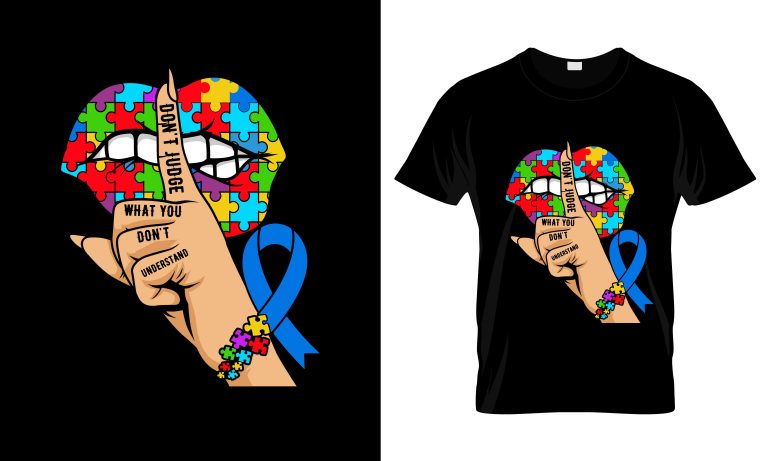Mastering DTF Printing at Home: Your Step-by-Step Guide
Mastering DTF Printing at Home is an exciting journey into the world of innovative fabric printing, perfect for creative individuals looking to add a personal touch to their clothing and accessories. DTF, or Direct to Film, presents a unique opportunity to produce vibrant, high-quality designs that effortlessly transfer onto a multitude of fabrics. In this comprehensive guide, we will explore essential DTF printing supplies, detail the entire DTF printing process, and provide you with step-by-step instructions on how to DTF print like a pro. Whether you’re a DIY enthusiast or a budding small business owner, understanding the fundamentals of DTF transfer printing can empower you to create stunning, long-lasting prints. Join us as we unravel the secrets to achieving exceptional results from your home workspace, turning your ideas into wearable art.
When discussing the concept of mastering home-based printing, techniques such as DIY fabric transfer printing and at-home design creation come to mind. DTF printing serves as a modern method of applying art onto textiles, allowing for intricate designs that stand out on various fabric types. Whether you’re curious about the best practices for how to DTF print or seeking clarity on necessary DTF transfer printing supplies, this guide will cater to your needs. The process not only stimulates creativity but also introduces both hobbyists and professionals to a world where fabric printing becomes a canvas for artistic expression. In the following sections, we will delve deeper into the steps and materials required for a successful DTF printing experience.
The Basics of DTF Printing: A Beginner’s Overview
DTF printing, or Direct to Film printing, is revolutionizing the way DIY enthusiasts approach fabric customization. This method involves printing a design on a specialized film, applying a unique adhesive powder, and transferring the design to fabric using a heat source. What separates DTF printing from other methods, such as traditional screen printing or heat transfer vinyl, is its ability to produce intricate designs with vibrant colors on various fabric types. With the right DTF printing supplies, even beginners can achieve professional-looking results without the need for an extensive workshop.
Those embarking on their DTF printing journey should familiarize themselves with key equipment, such as a DTF printer, transfer film, and a heat press. Knowing the basic components of the DTF printing process lays a strong foundation for success. Moreover, it is important to understand that DTF printing works exceptionally well on both cotton and polyester blends, making it versatile for t-shirts, tote bags, and more. This introductory knowledge sets the stage for diving deeper into techniques and tricks that enhance your DIY DTF printing outcomes.
Essential DTF Printing Supplies for Success
To embark on your DTF printing adventure, gathering the right DTF printing supplies is crucial. Essential items include a specialized DTF printer that utilizes particular ink formulations designed for optimal transfer quality. The DTF transfer film is another key component; it is coated to ensure that designs adhere well to the fabric during the heat transfer process. Alongside these, adhesive powder plays a vital role in bonding the printed ink to the transfer film, ensuring longevity and vibrancy in your designs.
A high-quality heat press is indispensable for DTF transfer printing, as it allows for even heat distribution and consistent application of pressure. Additionally, you will need a good graphics software application, such as Adobe Illustrator or CorelDRAW, for creating your designs. By investing in these supplies and tools, you will be well-equipped to execute the DTF printing process effectively, leading to stunning outcomes on your fabrics.
Step-by-Step Guide on How to DTF Print
Understanding how to DTF print effectively is essential for achieving high-quality results. The process begins with creating your design in graphic software, taking care to size it according to the fabric dimensions. This step is crucial, as a poorly sized design can lead to disappointing results. After crafting your design, the next phase involves printing it onto the DTF transfer film in mirror mode to ensure the image transfers correctly onto the fabric.
Following the print, the application of adhesive powder is a pivotal moment in the DTF printing process. Immediately sprinkle the powder on the wet print and ensure it adheres properly before shaking off excess. Once this step is completed, curing the print by passing it through an oven or using the heat press will seal the adhesive, making it ready for transfer. Understanding these steps provides a seamless experience for beginners looking to master DTF printing techniques.
Troubleshooting Common DTF Printing Issues
Like any printing method, DTF printing can sometimes present challenges. Common issues include faded prints, peeling designs, and color misalignment. For faded prints, it’s essential to ensure that your adhesive powder is evenly applied and that your printer settings are correct. Checking the calibration of your printer can prevent these mishaps, allowing your designs to pop with vibrant colors.
Peeling can be an issue if the curing process is not adequately executed. If your transfers are lifting off the fabric too easily, consider extending your curing time or checking if proper heat and pressure were used during the transfer. Color misalignment may occur but can often be resolved by ensuring you are printing in mirror mode, along with regular maintenance checks on your printer to keep the colors consistent and accurate.
Best Fabric Choices for DTF Printing
Choosing the right fabric is paramount for achieving optimal results in DTF printing. The best materials for this method include cotton, polyester, and cotton-polyester blends. These fabrics accept the DTF inks well, helping to lock in the vibrant colors and ensuring durability over multiple washes. Always perform a test print on your chosen fabric before committing to a larger print run.
Using the wrong fabric can lead to inadequate adhesion or color transfer issues, resulting in disappointing outcomes. Prioritize choosing high-quality fabrics that are clean and free from any coating or treatments that may affect adhesion. As you adapt your DTF printing skills, experimenting with different fabric types will further enhance your ability to create unique and stunning printed items for personal or commercial use.
Tips for Perfecting Your DTF Printing Skills
Mastering DTF printing involves more than just following steps; it requires an understanding of various techniques that refine your skills. One critical tip is to manage your colors effectively in your graphics software. Use the appropriate color profiles that align with your printer settings to ensure your prints match your on-screen designs. Experimenting with these settings can prevent unexpected results and lead to vibrantly colored final products.
Regular maintenance of your printer and tools cannot be overstated. Keeping your DTF printer clean will help avoid clogs and ensure optimal print quality. It’s also wise to routinely check your ink levels and adhesive powder supply to prevent interruptions during the printing process. As you gain experience, these small practices will ensure smoother operations and better overall results in your DTF printing ventures.
Frequently Asked Questions
What is the DTF printing process when mastering DTF printing at home?
The DTF printing process involves printing your design onto a special transfer film, applying adhesive powder, curing the print, and then using a heat press to transfer the design onto fabric. This method is ideal for DIY DTF printing, allowing for vibrant and durable designs.
What equipment do I need for DIY DTF printing at home?
To successfully engage in DIY DTF printing at home, you’ll need a DTF printer, DTF transfer film, adhesive powder, a heat press, and graphics software like Adobe Illustrator. Having the right DTF printing supplies is crucial for achieving high-quality results.
How to DTF print successfully on various fabrics?
To DTF print successfully on fabrics, first select compatible materials, such as cotton or polyester blends. Then, ensure your design is well-prepared and your colors are adjusted for color accuracy. Follow the DTF printing process for optimal results.
What are common issues in mastering DTF printing at home?
Common issues include faded prints, peeling designs, and color misalignment. These problems usually stem from improper adhesive application, insufficient curing, or incorrect print settings. Adjusting these aspects can enhance your DTF printing results.
Can I use any printer for DTF transfer printing?
Not all printers are suitable for DTF transfer printing. You should use a DTF printer or compatible eco-solvent or inkjet printers with necessary adaptations. It’s essential to choose the right DTF printing supplies to ensure quality.
What tips can help improve my DTF printing process at home?
For improving your DTF printing process, select the right fabric types, ensure your printer settings are optimized for color accuracy, maintain your equipment regularly, and conduct test prints to refine your technique. Experimenting will further enhance your DIY DTF printing skills.
| Key Points | Details | |
|---|---|---|
| Introduction to DTF Printing | DTF printing is a method for vibrant fabric designs, suitable for various apparel. | |
| Necessary Equipment & Materials | Includes DTF printer, transfer film, adhesive powder, heat press, and graphics software. | |
| Step-by-Step Process | 1. Design Creation 2. Print on Film 3. Apply Adhesive Powder 4. Cure Print 5. Transfer to Fabric 6. Peel Film | |
| Tips for Success | Choose compatible fabrics, manage colors carefully, and maintain your printer regularly. | |
| Common Issues & Solutions | Address issues like faded prints and peeling by adjusting settings and ensuring proper printing techniques. | |
Summary
Mastering DTF Printing at Home can open up a world of creative possibilities for fabric enthusiasts. DTF printing allows you to craft personalized designs that are vibrant and durable, making it an excellent choice for a variety of home projects. By following the step-by-step process outlined in this guide, you can master the techniques of DTF printing, ensuring each design transfers flawlessly onto your chosen fabrics. With practice, your expertise will grow, enabling you to experiment with different styles and materials. Embrace the art of DTF printing to create stunning pieces that showcase your unique flair.





